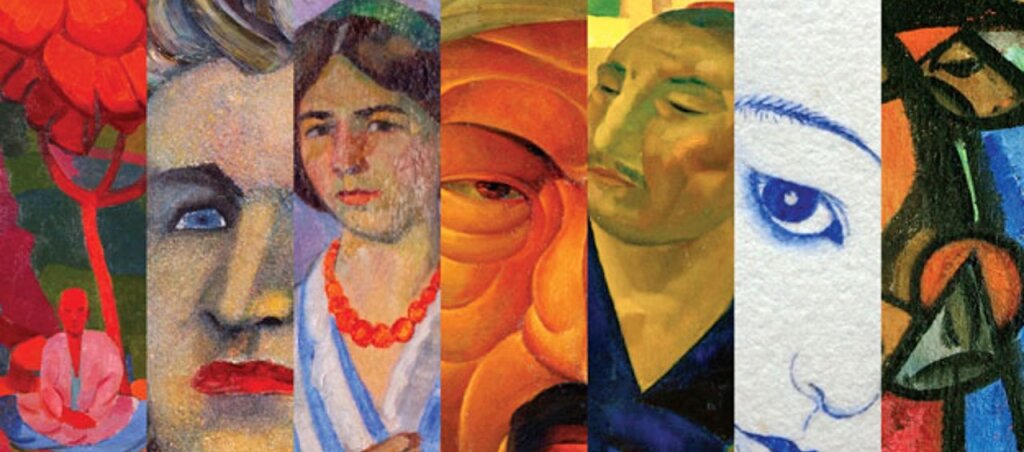On February 9th, 2018 the Jordan Center hosted “On Narratives of Possibility and the Nature of Social Protest: Scarcity, Loss and the Problem of Power in Revolutionary Russia”, a colloquium discussion with William Rosenberg, Professor of History Emeritus at the University of Michigan and moderated by Yanni Kotsonis, Professor of History and Russian & Slavic Studies at NYU. The discussion was part of the Jordan Center’s 2018 Colloquium Series.
Rosenberg began with an overview of his working paper, discussing the construction of the dominant narrative leading to the events of 1917 and their destabilizing consequences. According to Rosenberg, the nature of power in this narrative was largely “unitary” and the central actors conceptualized themselves within this narrative according to particular notions of history’s intended trajectory. Nevertheless, the series of events that brought such actors to power can be viewed within various frameworks of “rational” notions of top-down government reform and the more affective tendencies of mass demonstration.
Issues of scarcity and loss played central roles in these unfolding events. While the notion of “scarcity” typically refers to objective conditions and qualities, such as finances and loans, it can also be conceptualized as fear and anxiety and the issue of how to manage such emotions. One major cause of anxiety among Russians was the fear that problems wouldn’t be solved in the future. “Loss” can similarly be understood in not only objectified terms, but also as a longing for peace and stability. Russians’ desire to end the war was less a hunger for victory and more an insistence on putting an end to the consequent misery and loss. Such emotions permeated Russian society and worked to instill revolutionary action leading up to 1917 with particular kinds of signifiers and meaning. So if politics was about the possible, was it possible for the actors of 1917 to address the emotional scarcity of society?
Rosenberg’s introduction was followed by feedback from participants. Brandon Schechter, Assistant Professor and Elihu Rose Scholar in Modern Military History at NYU, pointed out that violence emerged early in 1916 as a solution to the problem of need. Rosenberg noted that the state failed to institute proper mechanisms to mediate grievance, which ultimately paved the way for violence. Anne O’Donnell, Assistant Professor of History at NYU, wondered how talk about scarcity connects to action; how is emotion working as an explanatory tool within this context? Rosenberg remarked that admittedly it is difficult for historians to successfully penetrate the emotions of a particular period; however, working with archives at the local level has proven effective in better understanding the nature of the time, particularly at the level of the everyday.
Brigid O’Keeffe, Associate Professor of History at Brooklyn College, expressed skepticism about the paper’s dichotomy between rationality and emotionality, particularly in the way it illustrates such a stark divide between the rational, cool-headed bureaucrats and the spontaneous demonstrators. The dichotomy is gendered, she proposed. In fact, the emotions of members of society were often rational and there were good reasons to have these emotions. Rosenberg accepted this point, but noted that in many ways the Revolution can be viewed as an explosion of feeling and often functions to pronounce what people don’t want rather than what they do. Essentially, it is useful to understand the events leading up to 1917 beyond the stark state/society, reason/emotion dichotomies and consider the fact that the actions of each side do not necessarily need to be characterized in a consistent way. In many cases, the possession and expression of emotion was a quite rational response to the conditions of society.
Moreover, in spite of what the title of this discussion might suggest, demonstrations do not exist exclusively through spontaneous uprising; such is not necessarily their “nature.” Crowds also possess politics and coherent narratives, as Jane Burbank, Professor of History and Russian & Slavic Studies at NYU claimed, which are directly addressed to the state. Rosenberg responded by noting that part of the task of his work lies in identifying individual emotions that are located within shared experiences, those that comprise a “field of emotions.” Reflecting on the past often gives us a story of “shared history” – and this is one perhaps constructed by the shared experiences of mass demonstrators – and so it is a historian’s task to work through this collectivity. Moreover, while crowds certainly possess narratives, they are not necessarily “programmatic.” Emotion often still functions as the foundation of crowd politics, even as members make concrete demands, and so it can be difficult to shape government policies to this abstract field of emotions.
“Emotion” itself is a loaded term and needs to be understood in particular contexts when investigating the events leading up to the Revolution. Rosenberg makes frequent use of the term “anxiety” when describing the atmosphere of Russian society in 1916. While being experienced by civilians on the level of the everyday, government officials also possessed a kind of anxiety, albeit with a different object i.e. the acquisition of modernity, rather than bread, as Betty Banks, Ph.D. Candidate in History at NYU, pointed out. So do we need various definitions of “anxiety”? Rosenberg believes such a distinction is largely unnecessary; more significant is understanding how such levels of anxiety translate into behavior, and he does not necessarily have the exact answer to this question. Bruce Grant, Professor of Anthropology at NYU, continued this discussion of terminology by suggesting an expansion of “emotion” into such ideas as “trauma” and “affect.” Rosenberg again pushed back, noting that such characterizations are quite specific and do not exactly apply within his larger argument. What he intends to illustrate are particular states that “conditioned, but not necessarily determined, behavior.”



